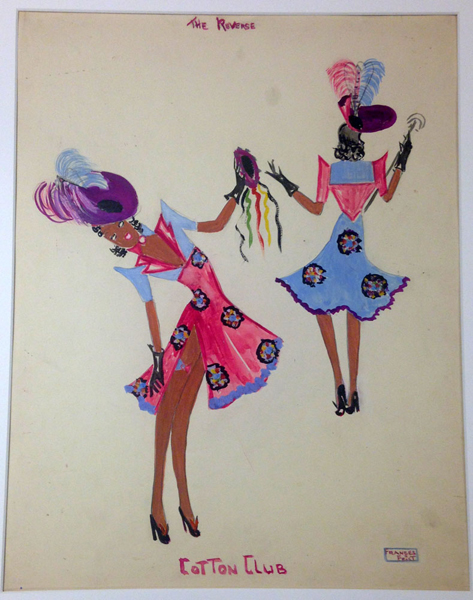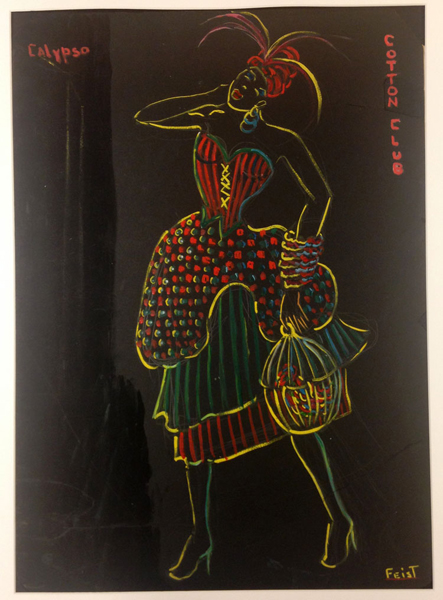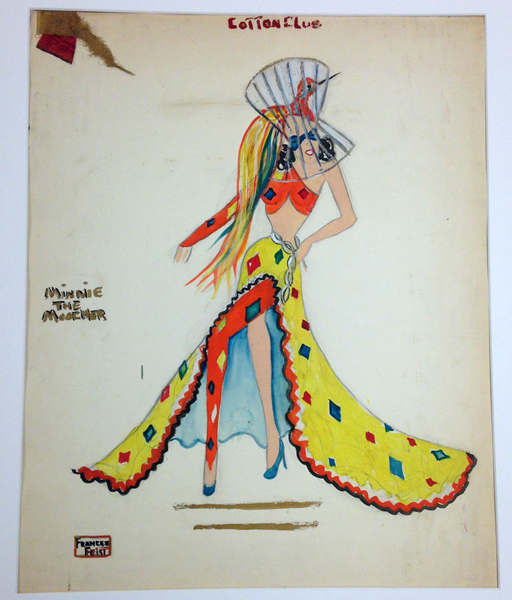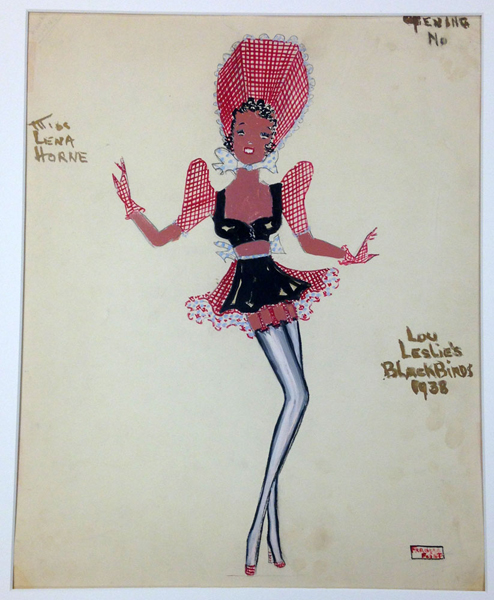Frances Feist: New Jersey to the Cotton Club
Tuesday, May 8, 2018 by
When she was 27 years old, New Jersey native Frances Feist won a contest sponsored by the famous Cotton Club. The contest was set up to find someone to design costumes for the elaborate shows planned for the Cotton Club’s new location in Times Square. Educated at George Washington University, Feist came from a good family, and the comings and goings of her youth were noted in Washington, D.C.’s society pages. Winning the Cotton Club contest marked her debut as a costume designer.
Opened in 1923 by gangster and bootlegger Owney Madden, the Cotton Club soon became the most popular nightclub in Harlem. By 1927, jazz great Duke Ellington led the house band, and musicians like Louis Armstrong, Ella Fitzgerald, Count Basie, and Billie Holiday graced the nightclub’s stage. The Club was famous for its entertainers, but it maintained a strict segregation policy for its guests. As a “Whites-only” venue in a predominantly African-American neighborhood, the venue took money from white elites visiting from downtown and drew criticism from writers and artists living in the neighborhood.
After a 1935 race riot, the Cotton Club relocated to the Times Square Theater District, where it opened with extravagant musical revues in 1936. Entertainments starred Cab Calloway and Bill “Bojangles” Robinson at a record-breaking nightclub salary. Over a hundred chorus dancers would perform in costumes the Daily News described in 1937 as “lavish and tasteful as anything ever seen on the Broadway stage.”
Between 1937 and 1939, Feist designed at least eight revues at the Cotton Club. She made her Broadway debut with a few costumes in the play Good Hunting produced in November 1938. Her other Broadway credits consist of Lew Leslie’s Blackbirds of 1939 and the musical comedy Yokel Boy produced that same year. After 1940, Feist seems to have shifted away from theatrical design work to focus on a career as a painter.
Not a lot is known about the life of Frances Feist. The most substantial biography available comes from the small paragraph that makes up her New York Times obituary (July 6, 1995). It describes her as loving, independent, and vivacious, and identifies her favorite colors as cobalt blue and Schiaparelli pink. In the 1960s, Feist donated over 50 of her original costume design renderings to the Museum of the City of New York.
The conservation of these four Feist renderings was made possible by the NYSCA/GHHN Conservation Treatment Grant Program administered by the Greater Hudson Heritage Network with public funds from the New York State Council on the Arts.





